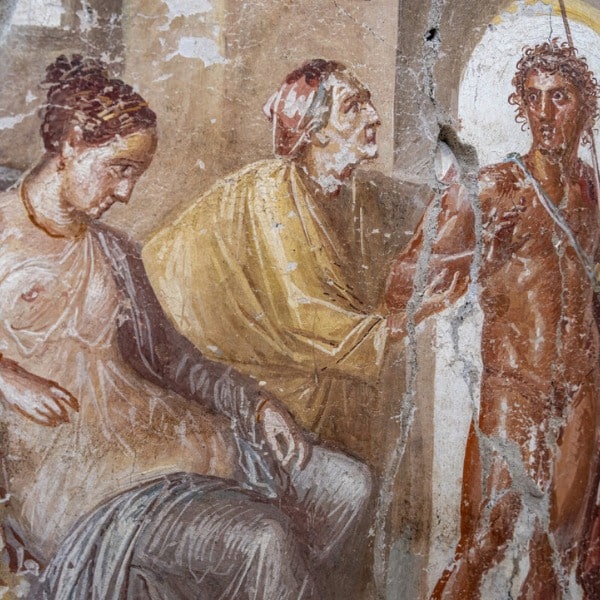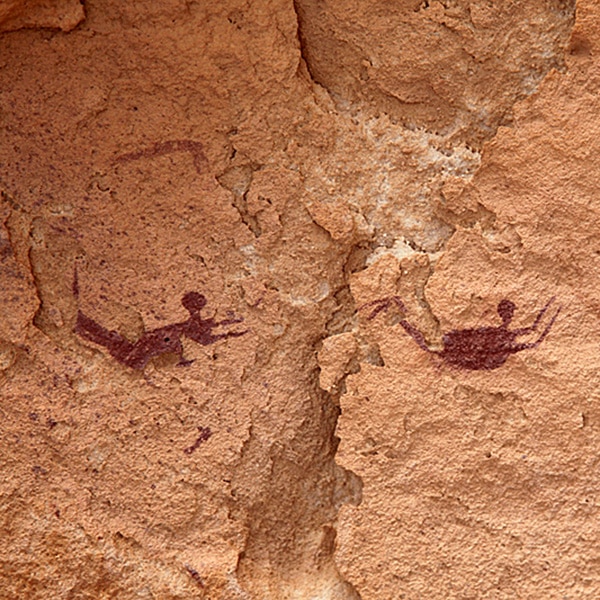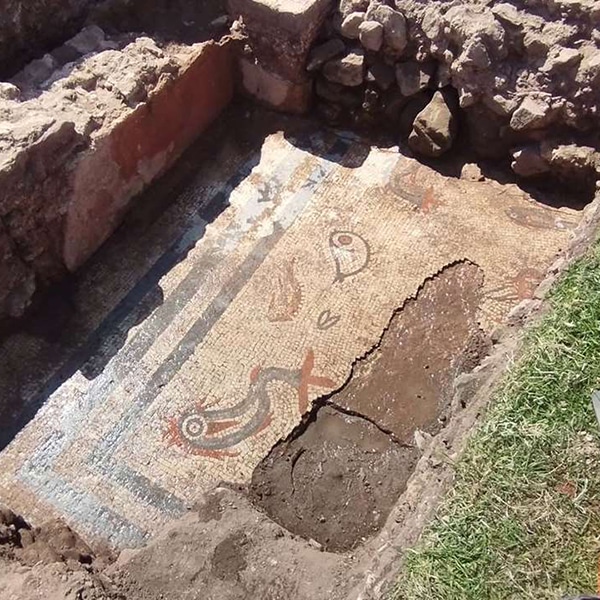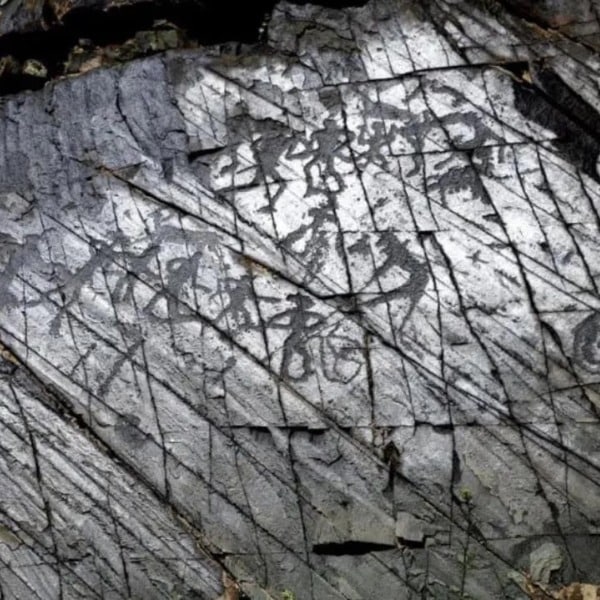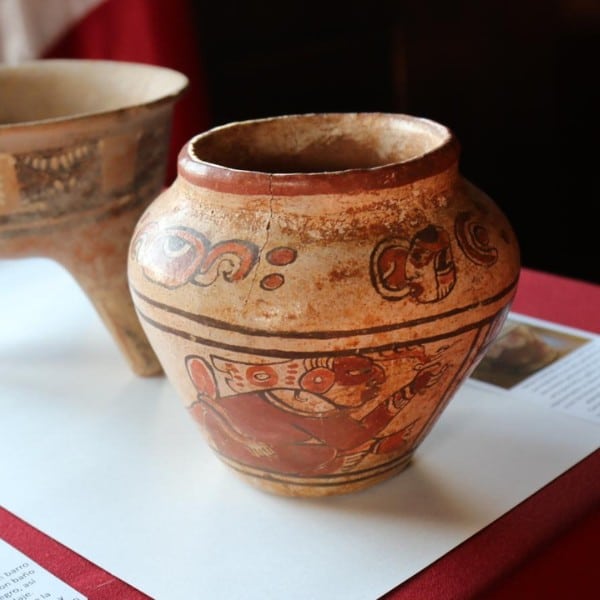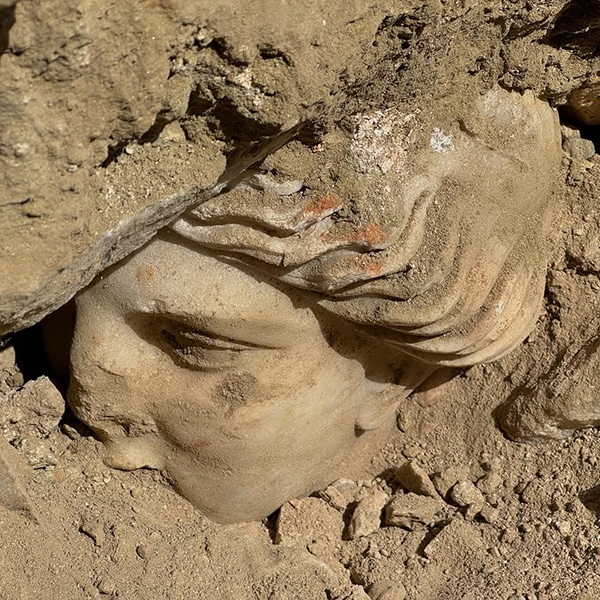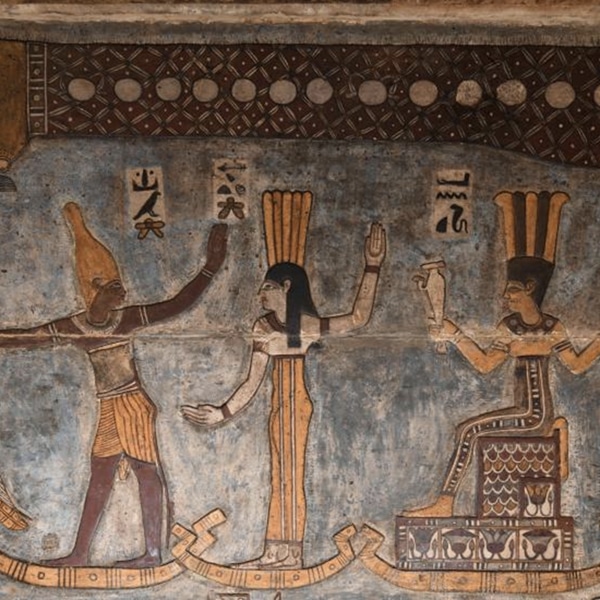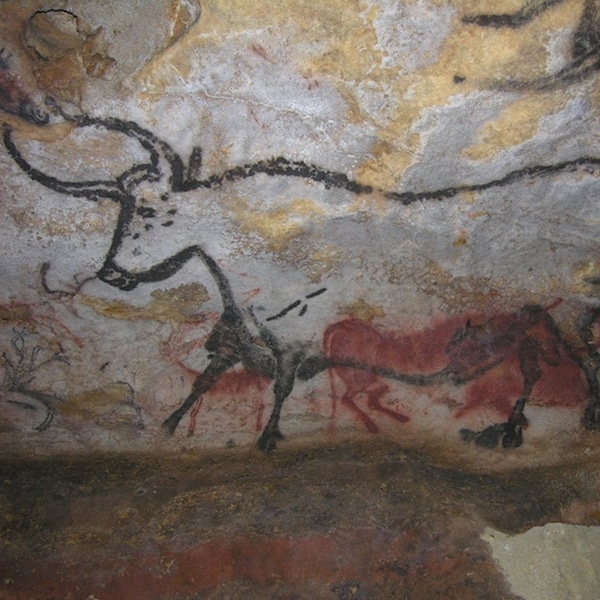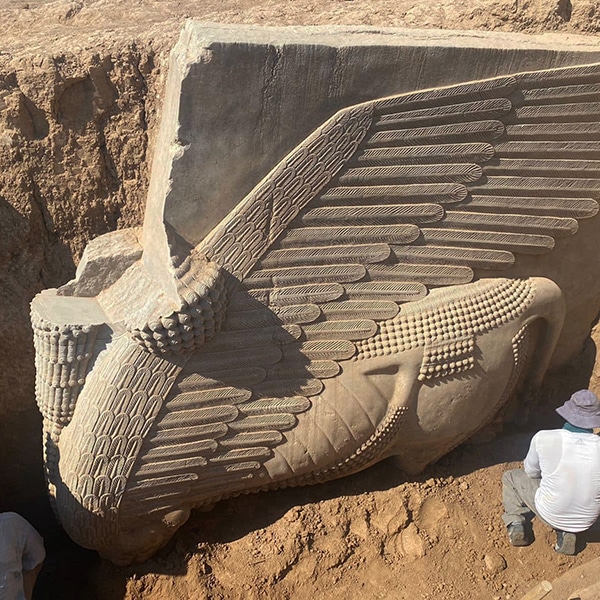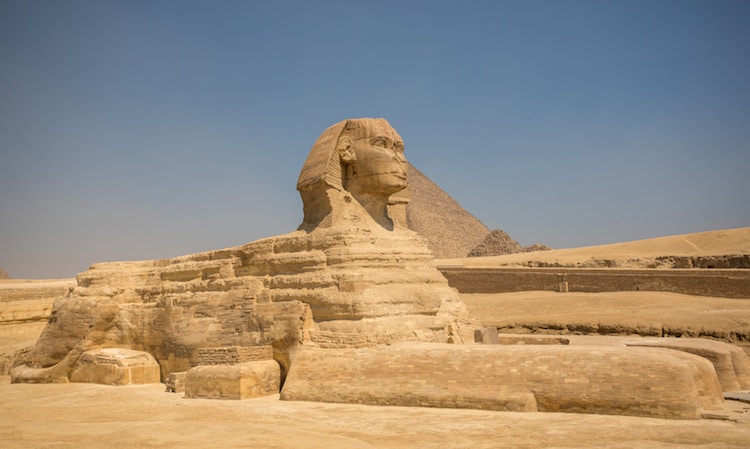
Photo: Stock Photos from WitthayaP/Shutterstock
Situated amongst the iconic Great Pyramids is a monument as equally impressive and emblematic of Ancient Egyptian engineering: the Great Sphinx of Giza. Although sphinxes appeared in art throughout the ancient world, this colossal statue remains the most well-known depiction of the mythological creature.
The 240-foot-long statue was carved out of one piece of limestone by hundreds of workers, and, at one time, completely painted. While the landmark may not be in the same condition as it was thousands of years ago, there is still a lot to be learned from its engineering and legacy.
Here, we will explore the history of this important landmark and how it was rediscovered.
What is the Great Sphinx of Giza? Learn about this Ancient Egyptian monument below.
What is a sphinx?

Fernand Khnopff, “Caress of the Sphinx,” 1896 (Photo: Google Arts & Culture, Public Domain)
A sphinx is a mythological creature who appears in several different cultures. Typically, it is presented with the head of a human, a falcon, a cat, or a sheep, and the body of a lion with the wings of a falcon. However, its appearance varies greatly depending on the region.
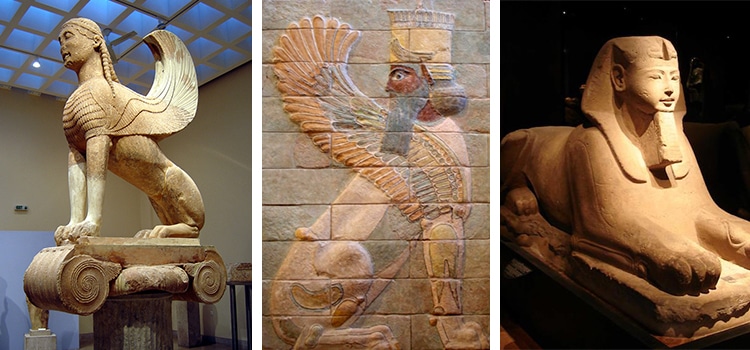
Left to right:
Sphinx sculpture from the Temple of Apollo at Delphi, c. 570-560 BCE (Photo: Google Arts & Culture, CC-BY-SA 3.0)
Winged sphinx from Darius palace at Susa, c. 510 BCE (Photo: Wikimedia Commons, Public Domain)
Ancient Egyptian sphinx sculpture. (Photo: Wikimedia Commons, CC-BY-SA 3.0)
In the Ancient Greek story of Oedipus, the sphinx is a terrifying creature who guarded the city of Themes with a tricky riddle. However, while the sphinx is depicted with a woman's head and malevolent demeanor in Greek traditions, the Egyptian sphinx is portrayed with a man's head and typically viewed as a benevolent force.
Early History of the Great Sphinx
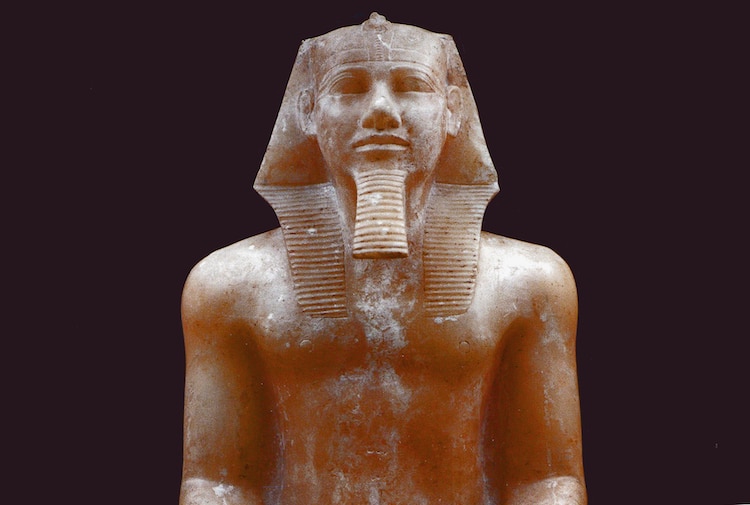
Alabaster statue of Khafre. (Photo: Juan R. Lazaro, CC-BY-2.0)
The Great Sphinx is the oldest and largest sculpture made during the Old Kingdom (circa 2686 – 2181 BCE), also called the “Age of the Pyramids.” Placed on the west bank of the Nile, it depicts a half-man, half-lion creature wearing a royal headdress and beard (now gone). It is part of the complex called the Giza Necropolis, which also houses the Pyramid of Khufu (also known as Pyramid of Giza), Pyramid of Khafre, and Pyramid of Menkaure.
Most Egyptologists theorize that it was built around 2500 BCE for the pharaoh Khafre and even modeled after the ruler's likeness. However, there is no evidence of what the monolith's original intention was or even its original name. It appears that at some point during classical antiquity—thousands of years after the Great Sphinx was constructed—it was referred to as the “sphinx” due to its resemblance to the mythological creature.
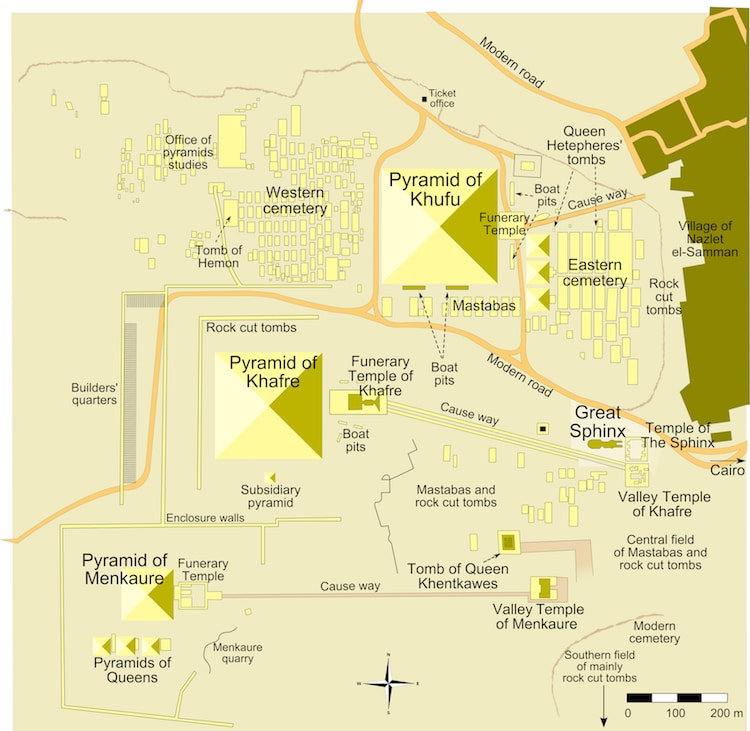
Map of the Giza pyramid complex. The Great Sphinx is across from the Eastern cemetery. (Photo: MesserWoland, CC BY-SA 3.0)
Rediscovery and Restoration
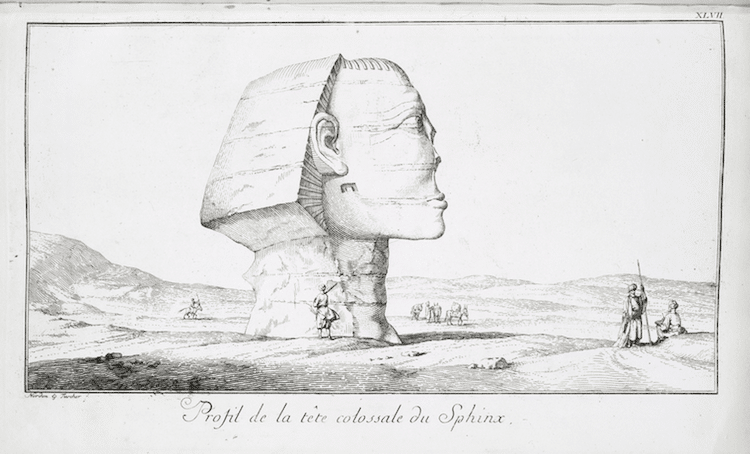
Frederic Louis Norden, “The Great Sphinx of Giza,” sketch on paper, made in 1737, published in 1755. (Photo: “Voyage d'Égypte et de Nubie”, Public Domain {PD-US})
Hundreds of years after its construction, the Great Sphinx and the rest of the Giza Necropolis were buried under sand and forgotten. Several pharaohs, including Thutmosis IV Ramesses II the Great, attempted to excavate the site but to seemingly no avail.
It wasn't until the 1800s that the Great Sphinx, which was buried up to its neck in sand, underwent its first modern archaeological dig. Led by Italian Giovanni Battista Caviglia, the team was able to clear enough sand to reveal the chest of the Sphinx. Excavations continued throughout the 19th century; eventually, the rest of the Great Sphinx's body was revealed as well as a stele of Thutmosis IV, which recorded a dream of his in which he was ordered to remove the sand covering the Sphinx.
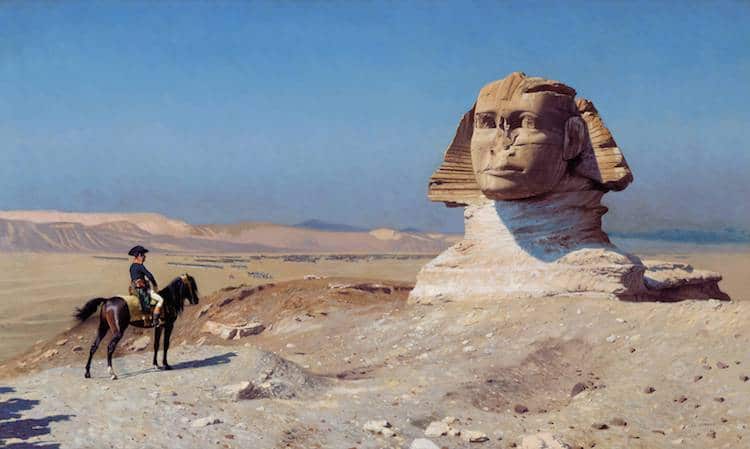
Jean-Léon Gérôme, “Bonaparte Before the Spinx,” oil on canvas, 1886. (Photo: Wikimedia Commons, Public Domain {PD-US})
Why did the Sphinx lose its nose?
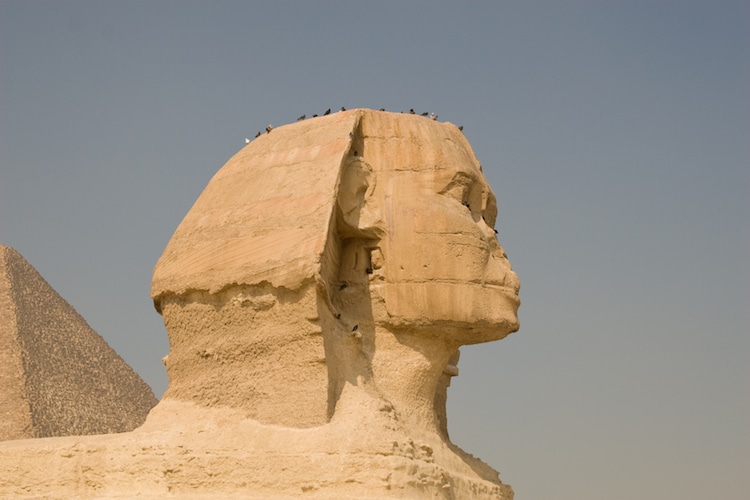
Photo: Stock Photos from Jeff Schultes/Shutterstock
As archaeologists were able to get a better look at the Great Sphinx and study its architecture, they discovered evidence that the nose of the statue was intentionally removed. A common misconception is that it was the army of Napoleon Bonaparte that destroyed the nose, however, illustrations from the 1700s prove the nose was missing long before Napoleon's arrival. In fact, modern archaeologists believe that it was removed sometime between the 3rd and 10th centuries CE. The reason why, however, is still debated.
Related Articles:
10 Facts About the Ancient Egyptian Queen Nefertiti
7 Surprising Facts About the Egyptian Pyramids
10 Fascinating Facts About Cleopatra, the Powerful Queen of the Nile











































































